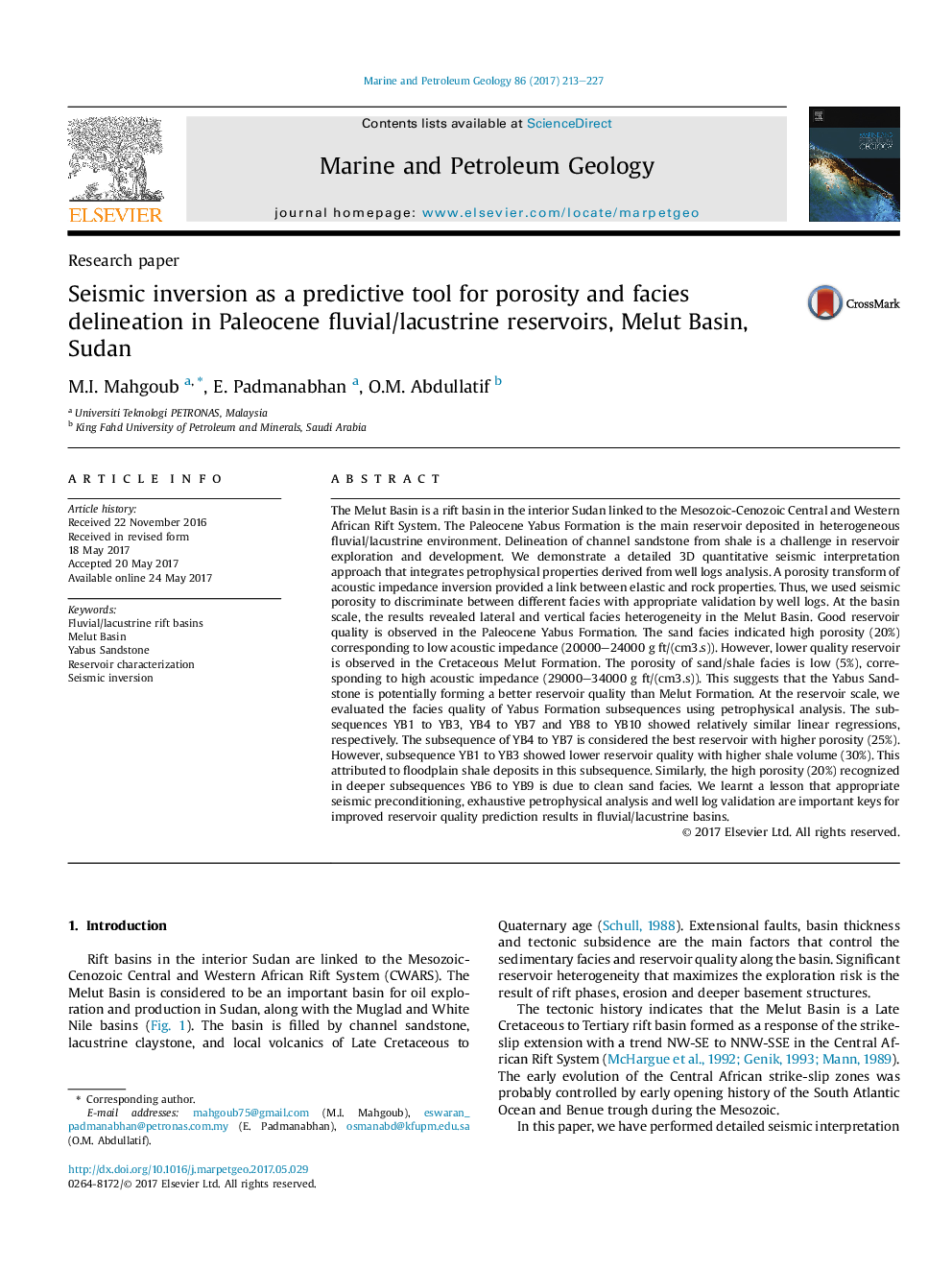| کد مقاله | کد نشریه | سال انتشار | مقاله انگلیسی | نسخه تمام متن |
|---|---|---|---|---|
| 5781973 | 1637141 | 2017 | 15 صفحه PDF | دانلود رایگان |
عنوان انگلیسی مقاله ISI
Seismic inversion as a predictive tool for porosity and facies delineation in Paleocene fluvial/lacustrine reservoirs, Melut Basin, Sudan
ترجمه فارسی عنوان
معکوس لرزه ای به عنوان یک ابزار پیش بینی کننده تخلخل و تشریح رخساره ها در مخازن پالئوسن رودخانه / دریاچه، حوضه ملوت، سودان
دانلود مقاله + سفارش ترجمه
دانلود مقاله ISI انگلیسی
رایگان برای ایرانیان
موضوعات مرتبط
مهندسی و علوم پایه
علوم زمین و سیارات
زمین شناسی اقتصادی
چکیده انگلیسی
The Melut Basin is a rift basin in the interior Sudan linked to the Mesozoic-Cenozoic Central and Western African Rift System. The Paleocene Yabus Formation is the main reservoir deposited in heterogeneous fluvial/lacustrine environment. Delineation of channel sandstone from shale is a challenge in reservoir exploration and development. We demonstrate a detailed 3D quantitative seismic interpretation approach that integrates petrophysical properties derived from well logs analysis. A porosity transform of acoustic impedance inversion provided a link between elastic and rock properties. Thus, we used seismic porosity to discriminate between different facies with appropriate validation by well logs. At the basin scale, the results revealed lateral and vertical facies heterogeneity in the Melut Basin. Good reservoir quality is observed in the Paleocene Yabus Formation. The sand facies indicated high porosity (20%) corresponding to low acoustic impedance (20000-24000 g ft/(cm3.s)). However, lower quality reservoir is observed in the Cretaceous Melut Formation. The porosity of sand/shale facies is low (5%), corresponding to high acoustic impedance (29000-34000 g ft/(cm3.s)). This suggests that the Yabus Sandstone is potentially forming a better reservoir quality than Melut Formation. At the reservoir scale, we evaluated the facies quality of Yabus Formation subsequences using petrophysical analysis. The subsequences YB1 to YB3, YB4 to YB7 and YB8 to YB10 showed relatively similar linear regressions, respectively. The subsequence of YB4 to YB7 is considered the best reservoir with higher porosity (25%). However, subsequence YB1 to YB3 showed lower reservoir quality with higher shale volume (30%). This attributed to floodplain shale deposits in this subsequence. Similarly, the high porosity (20%) recognized in deeper subsequences YB6 to YB9 is due to clean sand facies. We learnt a lesson that appropriate seismic preconditioning, exhaustive petrophysical analysis and well log validation are important keys for improved reservoir quality prediction results in fluvial/lacustrine basins.
ناشر
Database: Elsevier - ScienceDirect (ساینس دایرکت)
Journal: Marine and Petroleum Geology - Volume 86, September 2017, Pages 213-227
Journal: Marine and Petroleum Geology - Volume 86, September 2017, Pages 213-227
نویسندگان
M.I. Mahgoub, E. Padmanabhan, O.M. Abdullatif,
